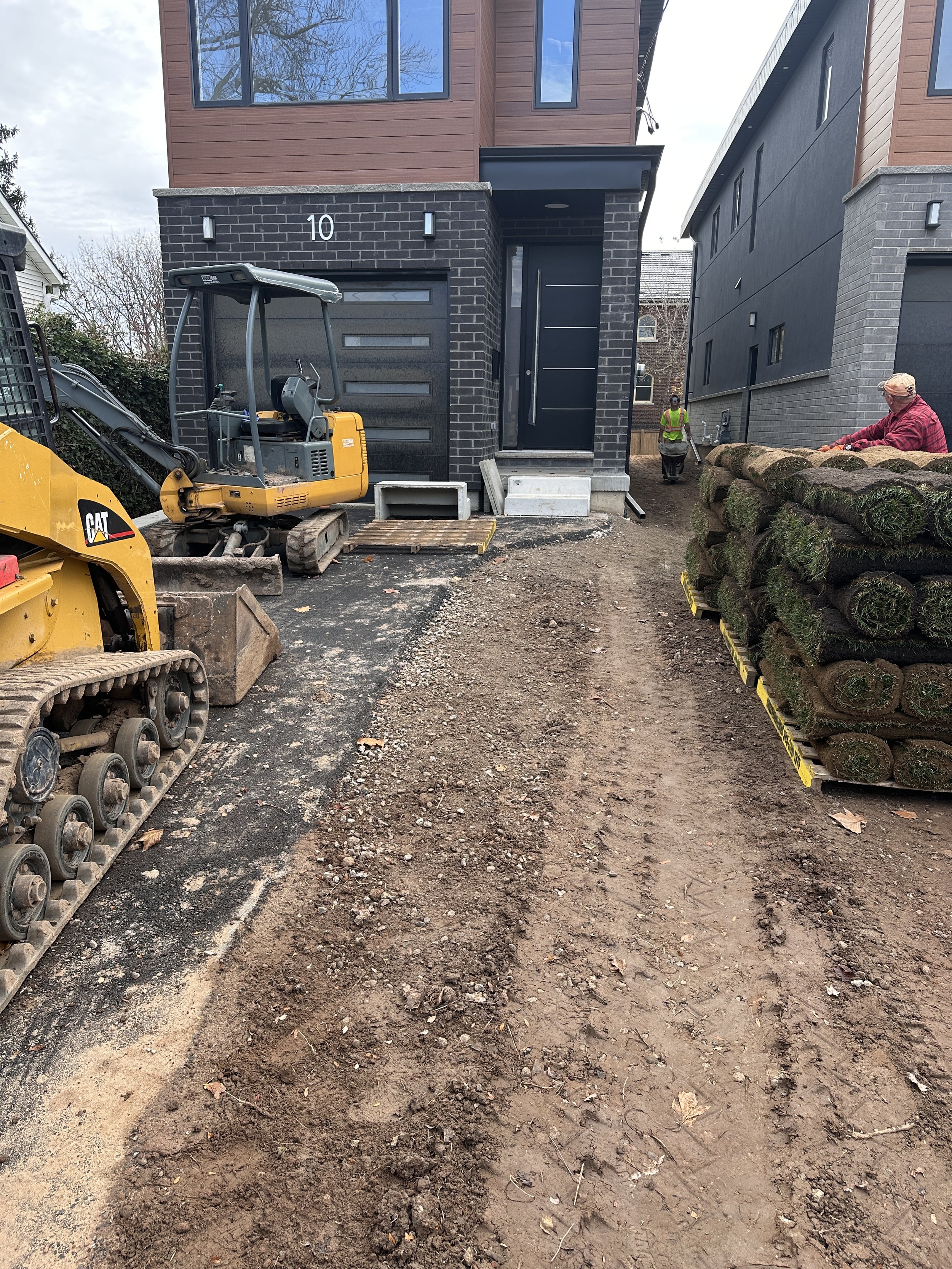Grading Plan
When it comes to planning and building on your property, a grading plan is one of the most important steps. It’s not just about making things look nice, it’s about making sure your property works well and stays safe for years to come. Let’s dive into what a grading plan is and why it matters so much.
What is a Grading Plan?
A grading plan is a detailed map that shows how the land on a property should be shaped. It helps guide water flow, keep the land stable, and make the property easy to use. A good grading plan ensures:
Water flows properly. Rainwater needs to be directed to safe outlets, like a municipal drain, a stream, or a river.
No low spots. Low areas can collect water, leading to puddles and problems like soggy lawns or even structural damage.
Safe slopes. Land that’s too steep can be unsafe or hard to use. A grading plan will guide where to place retaining walls or adjust the landscape to make it more functional and enjoyable.
Erosion control. It prevents soil from being washed away during heavy rains, keeping the land stable.
Building protection. A proper grading plan directs water away from structures, protecting foundations and basements.
Why Do You Need a Grading Plan?
A grading plan isn’t just helpful—it’s essential. Here’s why:
Avoiding Legal Issues.
Property owners are responsible for managing rainwater on their land. Water can’t flow onto a neighbor’s property. If it does, it could lead to legal problems, like being sued for damages.
Guiding Construction.
Builders rely on grading plans to know where to move soil, how to shape the land, and where to install drainage features. It ensures the project runs smoothly and avoids surprises.
How Does a Grading Plan Work?
The process starts with a survey of the land. This survey shows the natural slopes and shapes of the property. Using this information, engineers design a plan that includes:
Drainage paths. It shows where water will flow to avoid pooling.
Land adjustments. The plan specifies how the land will be reshaped.
Building placement. It ensures water doesn’t collect near foundations.
Retaining walls. These structures hold back steep slopes and make land more usable.
Erosion controls. Features like rocks, grass, or mulch keep soil in place.
The Long-Term Benefits of a Grading Plan
Grading plans don’t just help during construction—they provide long-term benefits:
Protects your home. By directing water away, it keeps your foundation safe and prevents costly repairs.
Saves money. Planning ahead reduces the risk of unexpected issues during construction.
Keeps peace with neighbors. Proper water management prevents disputes and potential legal issues.
Why a Grading Plan is Worth It
A grading plan is more than a technical drawing—it’s a roadmap to a safe, functional, and beautiful property. It helps you avoid problems, protect your investment, and make the most of your land. Reach out to experts who can guide you through the process and make sure your property is set up for success. Let’s build smarter, safer, and better together.



